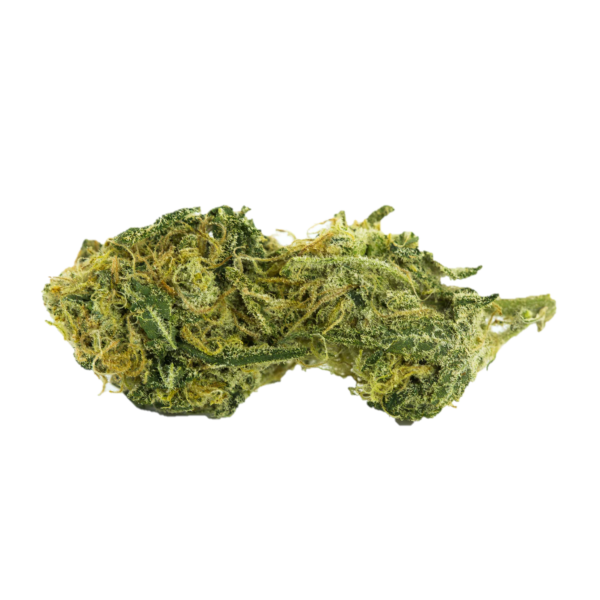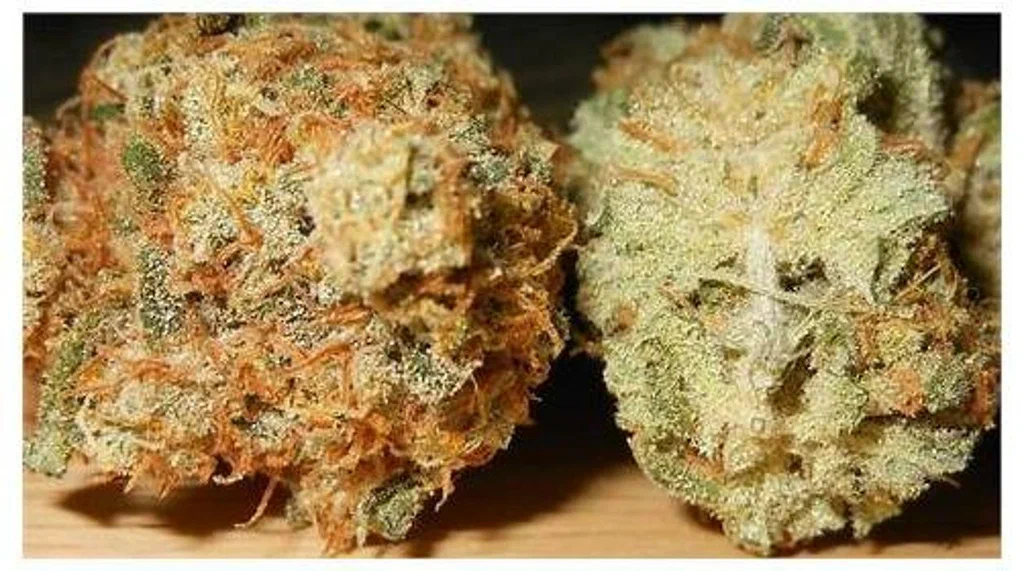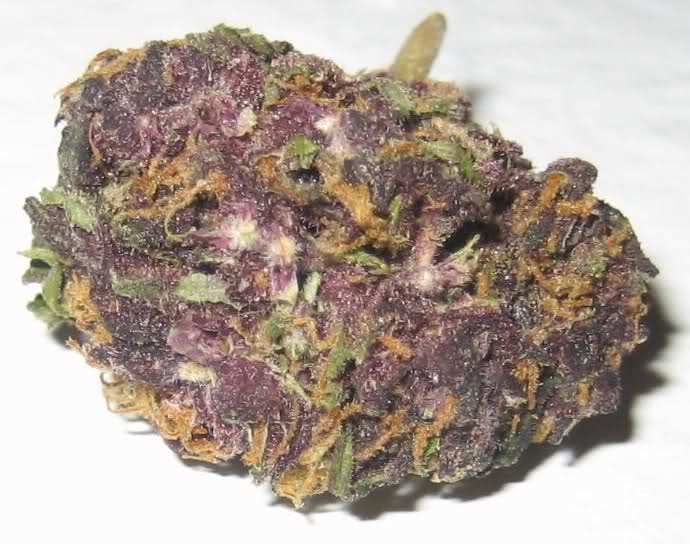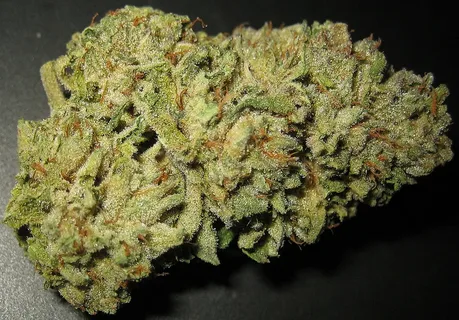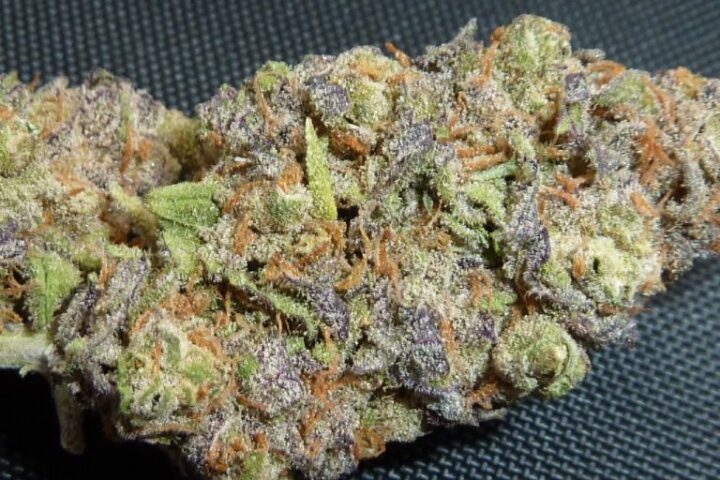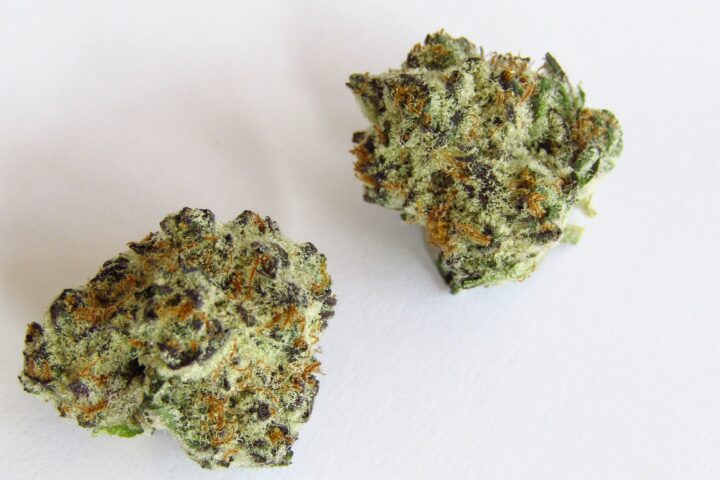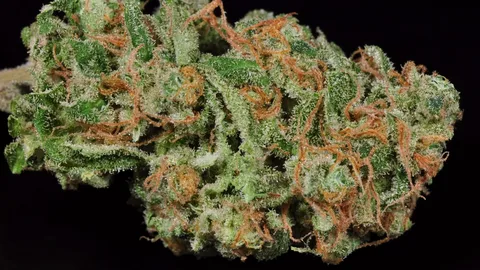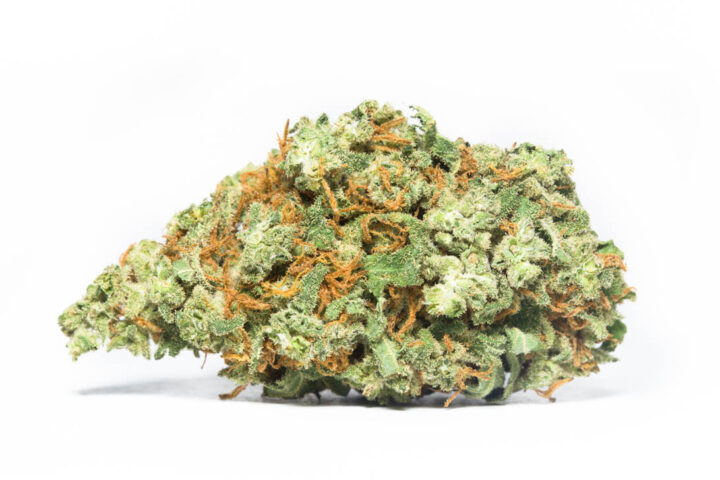Origin and Genetics
Purple Thai’s Ancestral Roots
- The origin of Purple Thai, also known as Oregon Purple Thai (OPT), can be traced back to the 1980s when it was developed by growers in the United States.
- Purple Thai is believed to have originated from a combination of genetic material from Southeast Asia’s famous strains and native American varieties, such as Haze and Northern Lights.
- The specific ancestry of Purple Thai involves a cross between a Sativa strain known for its uplifting effects, Thai Stick, and an indica-dominant strain with sedative properties, Hindu Kush.
- This blend resulted in a plant that combined the energizing, creativity-inducing effects of Thai Stick with the relaxing, pain-relieving characteristics of Hindu Kush, making it an extremely potent and sought-after variety among cannabis enthusiasts.
- The name “Purple” likely refers to the plant’s distinctive purple coloration, which can appear on its buds when grown under specific conditions.
- It is worth noting that while Oregon Purple Thai has gained popularity in recent years due to its impressive lineage and unique characteristics, there may be variations of this strain that deviate from the original genetic makeup.
- Overall, the genetic roots of Purple Thai are a testament to the innovative spirit of breeders who continue to push the boundaries of cannabis genetics, creating new strains with complex and intriguing effects.
- The rich genetic heritage of Purple Thai has made it one of the most popular varieties among medical and recreational users alike, prized for its potential therapeutic benefits as well as its remarkable potency.
The Purple Thai strain is a descendant of the famous Thai sticks, which originated in the mountains of Thailand.
The Purple Thai strain is a descendant of the famous Thai sticks, which originated in the mountains of Thailand. This region’s unique geography and climate created an ideal environment for the growth of high-quality cannabis, with its rich soil and ample rainfall contributing to the development of distinct flavor profiles and aromas.
The Thai sticks themselves were hand-rolled by local farmers using a combination of Sativa and Indica varieties. They would carefully select the finest buds, wrap them in paper or foil, and then bind them together with twine to create a compact, portable package that could be easily smuggled across borders.
The Purple Thai strain is believed to have been developed from one of these original Thai sticks, which was brought to Oregon by a cannabis enthusiast. Through selective breeding, the plant’s unique characteristics were preserved and enhanced, resulting in a distinct strain with its own set of attributes.
From a genetic perspective, Purple Thai is thought to be an indica-dominant hybrid, with a high percentage of Sativa genetics contributing to its uplifting and stimulating effects. The strain’s THC content is typically on the higher side, ranging from 15% to 20%, making it a popular choice among recreational users.
Despite its potent THC levels, Purple Thai is also prized for its medicinal properties, with some users reporting relief from pain, stress, and anxiety. The strain’s CBD content, which ranges from 0.5% to 1.5%, may contribute to these effects by providing a balancing influence on the plant’s psychoactive compounds.
In terms of flavor and aroma, Purple Thai is often described as sweet and earthy, with notes of fruit and spice. The strain’s distinctive purple coloration, which is caused by high levels of anthocyanins, adds to its appeal among enthusiasts.
Overall, Purple Thai is a unique and intriguing strain that offers a range of benefits for both recreational and medicinal users. Its complex genetic makeup and distinct flavor profile make it a popular choice among cannabis connoisseurs, and its potential therapeutic effects have made it a favorite among those seeking relief from pain and stress.
Cross-Breeding with Other Strains
The origin of the Purple Thai, also known as the Oregon Purple Thai, weed strain is attributed to its Southeast Asian roots. Specifically, it is a descendant of the original Thai Stick, a popular cannabis variety from Thailand in the 1960s and 1970s. The strain was later brought to the United States, where it was cultivated in the state of Oregon, giving rise to the name “Oregon Purple Thai.”
The genetics of the Purple Thai are a mix of indica and sativa strains, which contribute to its unique characteristics. It is believed to be a cross between the Thai Stick and other indicia-dominant strains from the Hindu Kush region. The result is a strain with high THC levels and a balanced effect.
The process of breeding different cannabis strains involves selecting parent plants that exhibit desirable traits, such as potency, flavor, or resistance to pests and diseases. In the case of cross-breeding the Purple Thai with other strains, breeders look for ways to enhance its characteristics while minimizing potential drawbacks.
Cross-breeding involves introducing a small amount of genetic material from one parent plant into another, creating offspring that combine the best traits of both parents. This process can take several generations, as each subsequent generation is bred with the goal of refining the desired traits.
In the context of the Purple Thai, cross-breeding with other strains may involve introducing new genetic material to enhance its potency, flavor, or resilience to disease. For example, breeders might combine the Purple Thai with a strain known for its high CBD levels, resulting in a strain with both therapeutic and recreational potential.
However, it’s worth noting that cross-breeding can also introduce unintended consequences, such as reduced potency or altered effects. As a result, breeders must carefully select parent plants and monitor the results of each generation to ensure that the desired traits are preserved and improved upon.
The process of developing new cannabis strains through cross-breeding is often an iterative one, with multiple generations being bred before the desired characteristics are achieved. This requires patience, skill, and attention to detail, as breeders work to refine the genetics of the Purple Thai and other popular weed strains.
Purple Thai has undergone crossbreeding with other strains to produce its unique characteristics.
Purple Thai, also known as Oregon Purple Thai or simply OPT, is a popular cannabis strain that has gained widespread recognition for its unique characteristics and effects. This strain has undergone significant crossbreeding with other strains to produce its distinctive features.
Genetically, Purple Thai is believed to be the result of crossing various Sativa and Indica strains from different parts of the world. The exact origin and genetics of this strain are unclear, but it is thought to have been developed in the 1970s or 1980s by a group of cannabis breeders.
The name “Purple Thai” suggests that the strain may be derived from Southeast Asian strains, possibly with a hint of Indica influence. However, the true ancestry of Purple Thai remains a mystery, and many breeder’s claim that they created this strain from scratch using their own expertise.
Despite its unclear origins, Purple Thai has become synonymous with high-quality cannabis due to its exceptional characteristics and effects. This strain is known for its deep purple coloration, which is caused by high levels of anthocyanin – a pigment found in the plant’s leaves and buds.
The unique coloration of Purple Thai is only one aspect of this strain’s genetic makeup. It also boasts an impressive THC content, typically ranging between 15-25% per gram, making it a potent and effective medication for pain management and other health conditions.
Purple Thai’s effects are often described as intense and long-lasting, with users reporting feelings of euphoria and relaxation after consuming the strain. The high is also said to be quite creative, making this strain popular among artists and musicians.
Effects and Properties
Relaxation and Euphoria
The effects and properties of the Purple Thai, also known as the Oregon Purple Thai, are quite impressive and sought after by those looking for a unique cannabis experience.
This strain is known to induce a deep sense of relaxation, which is often accompanied by euphoric feelings and a reduction in stress levels. The high from Purple Thai is said to be long-lasting, providing users with a prolonged period of calmness and tranquility.
One of the standout features of this strain is its ability to alleviate pain and discomfort. The analgesic properties of Purple Thai make it an excellent choice for individuals suffering from chronic pain, arthritis, or other inflammatory conditions.
The effects of Purple Thai also extend to promoting a restful sleep. Users have reported improved sleep quality after consuming this strain, which is especially beneficial for those struggling with insomnia or sleep disorders.
In terms of its euphoric properties, Purple Thai is said to induce feelings of happiness and elation. This makes it an excellent choice for individuals looking to unwind and lift their mood after a long day.
The effects and properties of Purple Thai can be attributed to its unique combination of terpenes and cannabinoids. This strain has a relatively high THC content, which contributes to its potent effects.
Additionally, the presence of myrcene, limonene, and pinene in this strain adds to its therapeutic benefits. Myrcene is known for its analgesic properties, while limonene contributes to its mood-enhancing and anti-inflammatory effects. Pinene, on the other hand, helps to reduce inflammation and alleviate respiratory issues.
Overall, Purple Thai is an excellent choice for those seeking a relaxing and euphoric experience from cannabis. Its unique combination of terpenes and cannabinoids makes it a standout among other strains, providing users with a unique set of therapeutic benefits.
As with any cannabis strain, it’s essential to approach Purple Thai with caution and in moderation. Users should start with low doses and gradually increase as needed to avoid overwhelming effects.
Keep in mind that the effects of Purple Thai can vary depending on individual tolerance and sensitivity. It’s also crucial to consult with a medical professional before using cannabis for medicinal purposes.
Users have reported feeling deeply relaxed and euphoric after consuming Purple Thai.
- The Purple Thai weed strain has been reported to have a profound impact on users, inducing feelings of deep relaxation and euphoria.
- User feedback suggests that consuming Purple Thai can lead to an intense sense of calmness, as if all worries and concerns have melted away.
- This strain is known for its ability to induce a state of deep relaxation, often referred to as “stoned”, where users may feel lethargic and disconnected from their surroundings.
- As the effects of Purple Thai take hold, users report feeling a sense of euphoria wash over them, accompanied by an intense feeling of happiness and well-being.
- The strain’s ability to induce relaxation and euphoria has made it a favorite among those seeking relief from anxiety, stress, and other mood-related disorders.
- In terms of its properties, Purple Thai is classified as a sedating and euphoric strain, with a THC content that can range from 15% to 22%.
Main Effects:
- Relaxation: Users report feeling deeply relaxed and calm after consuming Purple Thai.
- Euphoria: The strain is known for inducing intense feelings of happiness and well-being.
- Drowsiness: Many users report feeling lethargic and disconnected from their surroundings.
- Anxiety Relief: Purple Thai has been reported to provide relief from anxiety and stress-related disorders.
Medical Uses:
- Sedation: The strain’s sedating effects make it an effective treatment for insomnia and other sleep-related disorders.
- Pain Relief: Purple Thai has been reported to provide relief from chronic pain, including migraines and fibromyalgia.
- Anxiety Disorder: The strain’s ability to induce relaxation and euphoria makes it a popular choice among those seeking relief from anxiety disorders.
Therapeutic Benefits
The Purple Thai, also known as the Oregon Purple Thai or OPT, is a popular indica-dominant marijuana strain that has gained significant attention in the cannabis community due to its unique effects and properties.
One of the primary characteristics of the Purple Thai strain is its potent and long-lasting THC content, which can range from 15% to 20%. This high THC level contributes to its intense psychoactive effects, making it suitable for experienced smokers who are looking for a powerful and relaxing experience.
The Purple Thai strain has been reported to produce a euphoric and calming sensation, often accompanied by a sense of deep relaxation and tranquility. Smokers often describe the experience as soothing, with feelings of calmness spreading throughout their body and mind.
Another notable effect of the Purple Thai strain is its ability to induce sleepiness. Due to its high CBD content, which helps counterbalance the THC’s psychoactive effects, it can promote deep relaxation and eventually lead to a restful sleep. This makes it an excellent choice for individuals suffering from insomnia or other sleep disorders.
The Purple Thai strain also exhibits notable medicinal properties, particularly in terms of pain relief and anxiety management. Its high CBD content and complex terpene profile contribute to its therapeutic benefits, which include:
- Pain relief: The strain’s high THC level and balanced CBD content make it effective in reducing chronic pain, inflammation, and discomfort.
- Anxiety reduction: The Purple Thai’s sedating properties can help alleviate anxiety and stress, promoting a sense of calmness and relaxation.
- Anti-inflammatory effects: The strain’s complex terpene profile and high CBD content have been reported to exhibit anti-inflammatory properties, which may aid in reducing swelling and inflammation.
- Muscle relaxation: The Purple Thai’s relaxing effects can help alleviate muscle tension and spasms, making it an excellent choice for individuals suffering from muscle pain or fibromyalgia.
In conclusion, the Oregon Purple Thai strain is a highly potent and therapeutic marijuana strain that offers a unique combination of effects and properties. Its high THC level, balanced CBD content, and complex terpene profile contribute to its medicinal benefits, making it an excellent choice for individuals seeking relief from pain, anxiety, and sleep disorders.
Purple Thai has been suggested as a potential treatment for chronic pain, anxiety, and insomnia.
- Purple Thai, also known as Oregon Purple Thai or OPT, is a unique and potent cannabis strain that has gained attention for its potential therapeutic benefits.
- This strain is believed to have originated from the original Thai Stick variety, which was cultivated in Thailand during the 1960s and 1970s.
- As a result of selective breeding and cross-breeding with other strains, Purple Thai has developed distinct characteristics that set it apart from other cannabis varieties.
- One of its most notable features is its deep purple coloration, which is caused by the high concentration of anthocyanins – powerful antioxidants found in many fruits and vegetables.
- Purple Thai’s unique genetics have also resulted in a complex terpene profile, with a balance of pinene, limonene, caryophyllene, and other compounds that contribute to its distinctive aroma and flavor.
- The effects of Purple Thai are often described as sedating and relaxing, making it a popular choice for those seeking relief from chronic pain, anxiety, and insomnia.
- Users report feeling calm, serene, and disassociated from their worries and stressors, which can be particularly beneficial for individuals struggling with anxiety disorders or PTSD.
- Purple Thai’s sedating effects are also thought to be due to its high concentration of THC, as well as the presence of other cannabinoids such as CBD and THCV.
- While more research is needed to fully understand the therapeutic potential of Purple Thai, anecdotal evidence suggests that it may be a valuable tool for managing chronic pain, anxiety, and insomnia in some individuals.
- As with any cannabis strain, it’s essential to consult with a medical professional before using Purple Thai as a treatment option, particularly if you’re new to cannabis or have any underlying health conditions.
In conclusion, Purple Thai is an intriguing cannabis strain that has been suggested as a potential treatment for chronic pain, anxiety, and insomnia due to its sedating effects and complex terpene profile.
Cultivation and Care
Climate and Soil Requirements
Cultivation of the Purple Thai, also known as Oregon Purple Thai (OPT), requires a delicate balance of factors to optimize its growth and yield.
The climate conditions suitable for the cultivation of Purple Thai include a moderate temperature range between 65°F (18°C) and 85°F (29°C) with minimal fluctuations in day and night temperatures. It thrives in environments with high humidity levels, ideally between 40% to 60%. However, this strain can tolerate some drought conditions but may not perform optimally under such stress.
When it comes to soil requirements, Purple Thai prefers well-draining, rich potting mixes that contain a balanced mix of peat moss and perlite. The ideal pH range for the cultivation medium is slightly acidic to neutral, ranging from 6.0 to 7. It’s also recommended to maintain sufficient levels of calcium and magnesium in the soil to support healthy growth.
The strain can be grown indoors using LED grow lights or under a canopy outdoors with adequate shading. When growing indoors, ensure that your plants receive approximately 18 hours of light and 6 hours of darkness per day to simulate natural daylight conditions.
To prevent pests and diseases from affecting the Purple Thai plants, maintain strict cleanliness practices in your growing environment. Regularly inspect the foliage for signs of infestation or infection, such as yellowing leaves, white powdery patches, or tiny moving specks on the leaves’ undersides.
Purple Thai requires a warm, humid climate with welldraining soil to thrive.
The Purple Thai strain requires specific growing conditions to reach its full potential and thrive in a garden or indoor space.
Here are some key factors to consider when cultivating and caring for Purple Thai plants:
Climate Requirements
Purple Thai prefers a warm climate with average temperatures ranging from 65°F (18°C) to 80°F (27°C). Avoid exposing the plants to extreme temperatures, as this can cause damage or stunt growth.
Humidity Levels
- Purple Thai thrives in humid environments with relative humidity levels between 40% and 60%. You may need to use a humidifier to maintain optimal humidity levels, especially in dry climates.
Soil Requirements
Purple Thai requires well-draining soil that is rich in nutrients. A good quality potting mix or garden soil with a pH between 6.0 and 7.0 will help the plant absorb necessary nutrients for healthy growth.
Watering Schedule
Water your Purple Thai plants regularly, but avoid overwatering. Check the soil moisture by inserting your finger into the soil up to the first knuckle. If the soil feels dry, it’s time to water. Water thoroughly until you see water coming out of the drainage holes.
Care for Optimal Growth
- Provide adequate light: Purple Thai prefers bright indirect light, especially during the vegetative stage. As the plant matures, it may require some direct sunlight to promote flowering and resin production.
- Fertilize regularly: Feed your Purple Thai plants with a balanced fertilizer (10-10-10 NPK) once a week during the vegetative stage and twice a week during the flowering stage.
- Pruning: Prune your Purple Thai plants to control their height, promote bushy growth, and encourage flowering. Pinching off the tips of branches will also help to induce lateral branching and increase yields.
By following these guidelines and providing the right growing conditions, you’ll be able to cultivate healthy and productive Purple Thai plants that deliver high-quality buds with unique characteristics and effects.
Nutrient Needs and Pruning
The cultivation and care of the Purple Thai, also known as Oregon Purple Thai (OPT), weed strain require a delicate balance of nutrients and pruning to ensure optimal growth and development.
- Lighting: The Purple Thai is a Sativa-dominant strain that thrives in environments with plenty of natural light. It requires direct sunlight for at least 6 hours a day, but can tolerate partial shade if necessary.
- Temperature: This strain prefers temperatures between 18-24°C (64-75°F) during the day and around 15-20°C (59-68°F) at night. Avoid exposing it to extreme temperatures that may cause stress or damage.
- Nutrient Needs: The Purple Thai has moderate to high nutrient requirements, especially nitrogen and phosphorus. It responds well to balanced fertilizers with a pH between 6.0-7.0.
- Watering: This strain requires consistent moisture levels, but overwatering can be detrimental. Monitor the soil’s moisture by sticking your finger into it, and adjust watering accordingly. Aim for about 1-2 gallons of water per plant every week.
- Pruning: Prune your Purple Thai plants regularly to maintain their height, promote even growth, and encourage bushy development. Remove any weak or spindly branches, and trim the top of the plant to maintain a uniform shape.
- Training: Train your Purple Thai plants using techniques such as SCROG (Screen of Green) or LST (Low-Stress Training). These methods help increase yields by promoting even growth and light distribution.
- Pest Management: Keep an eye out for pests such as spider mites, mealybugs, and aphids. Isolate affected plants, treat them with insecticidal soap or neem oil, and take preventative measures to avoid future infestations.
- Harvest: Purple Thai is typically ready for harvest in about 60-70 days after flowering begins. Harvest buds when they are fully developed and the trichomes have turned from clear to a milky white color.
Regular pruning and fertilization are essential for promoting healthy growth and maximizing yields.
- The cultivation and care of the Purple Thai weed strain are crucial for promoting healthy growth and maximizing yields.
- This variety requires a well-ventilated area with adequate lighting to thrive, making it an ideal choice for growers in warm climates or those with access to grow lights.
- The optimal temperature range for cultivating Purple Thai is between 65°F to 75°F (18°C to 24°C), while maintaining humidity levels around 40% to 50% throughout the growth cycle.
- Adequate watering is also essential, as the strain can be susceptible to drought stress if not provided with sufficient moisture. Ensure that the soil remains consistently moist but never waterlogged.
- Regular pruning and training of the plants will help control height, promote even growth, and prevent pest infestations.
Here’s a list of pruning techniques that can be applied:
- Top-pruning: Remove the top two or three sets of leaves to encourage bushy growth and prevent the plant from becoming too leggy.
- Soft trimming: Remove lower branches and weak growth to improve air circulation and promote healthy development.
Fertilization is another critical aspect of cultivating Purple Thai. A balanced fertilizer with a nitrogen-phosphorus-potassium (NPK) ratio of 10-10-10 should be applied regularly throughout the growth cycle, starting from the seedling stage.
Here’s a breakdown of the fertilization schedule:
- Seedling stage (1-2 weeks): Fertilize once with a starter fertilizer containing high phosphorus levels to promote root development.
- Vegetative growth phase (2-4 weeks): Continue fertilizing every week or two with a balanced NPK fertilizer, gradually increasing the strength as needed.
- Flowering and fruiting stage: Switch to a bloom fertilizer enriched with phosphorus and potassium to promote flowering and increase yields.
Adequate nutrient management is essential for promoting healthy growth and maximizing yields. Regularly monitor the plant’s nutrient requirements, making adjustments as necessary to ensure optimal development.
Additionally, pest control measures should be taken regularly to prevent infestations that can damage or destroy the crop. These may include:
- Monitoring for pests such as spider mites, mealybugs, and aphids.
- Using neem oil or insecticidal soap to control infestations when necessary.
By following these guidelines on cultivation and care, growers can promote healthy growth and maximize yields of the Purple Thai weed strain.
- Y Griega Aka I Griega Weed Strain Information - October 9, 2024
- XXX OG Aka XXX Weed Strain Information - October 9, 2024
- White Gold Aka Oro Blanco Weed Strain Information - October 8, 2024

